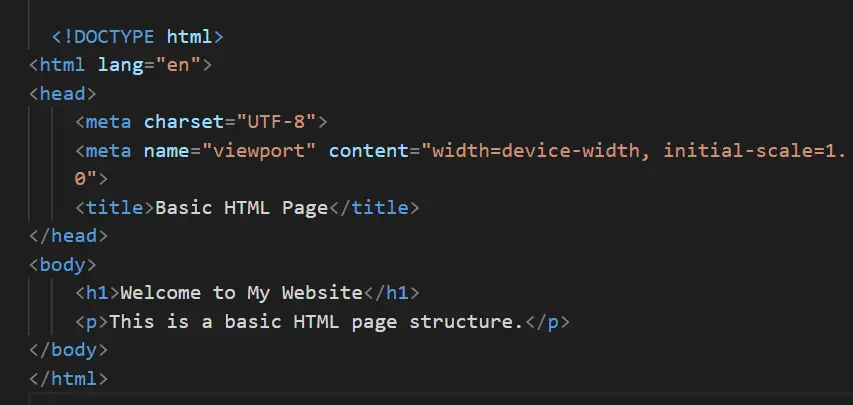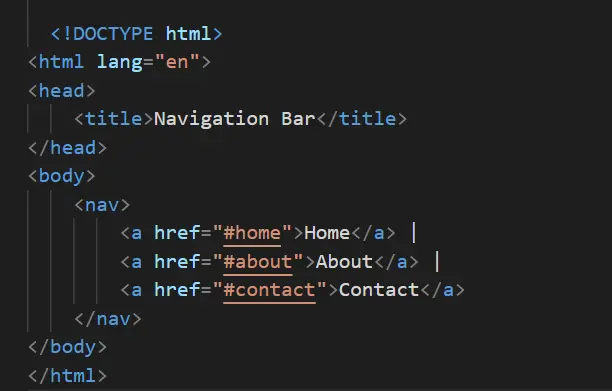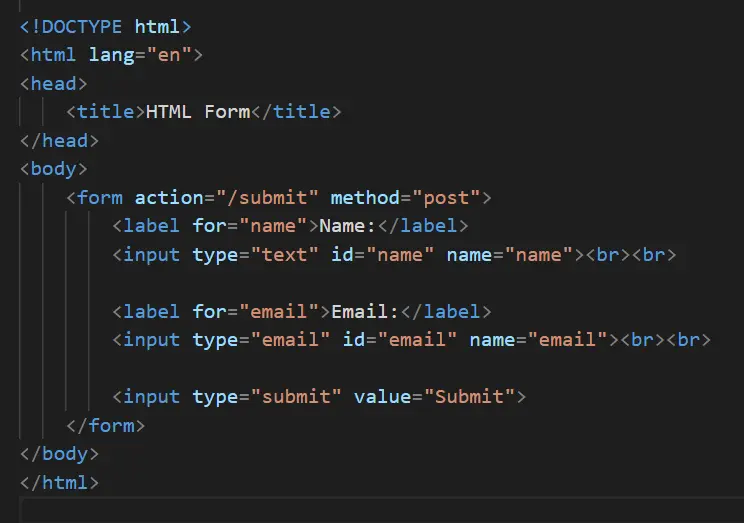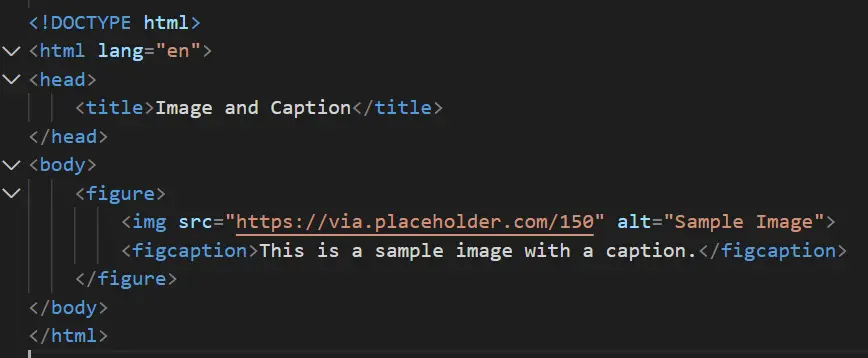What Are Basic HTML Codes- HTML (HyperText Markup Language) is the backbone of the web. It defines the structure of web pages, allowing content to be displayed in an organized and visually appealing manner. Whether you’re a complete newbie or brushing up on basics, understanding essential HTML codes is the first step in web development. In this article, we’ll break down four key examples of HTML code snippets and explain their components, purpose, and functionality.
Basic HTML Codes Page Structure
When starting with HTML, you’ll frequently encounter the following basic structure:
<!DOCTYPE html>
<html lang="en">
<head>
<meta charset="UTF-8">
<meta name="viewport" content="width=device-width, initial-scale=1.0">
<title>Basic HTML Page</title>
</head>
<body>
<h1>Welcome to My Website</h1>
<p>This is a basic HTML page structure.</p>
</body>
</html>
Explanation of Key Elements:
<!DOCTYPE html>:Declares the document type and version of HTML. It ensures compatibility across web browsers.<html>:The root element that wraps all content on the page.<head>:Contains metadata, such as the character set and title, which helps browsers interpret the page.<body>:Includes all the visible content on the webpage.
This structure serves as a foundation for more advanced HTML coding.
Creating a Navigation Bar
Navigation bars are crucial for user-friendly websites. Here’s a simple code example:
<!DOCTYPE html>
<html lang="en">
<head>
<title>Navigation Bar</title>
</head>
<body>
<nav>
<a href="#home">Home</a> |
<a href="#about">About</a> |
<a href="#contact">Contact</a>
</nav>
</body>
</html>
Understanding the Code:
<nav>:Defines a section for navigation links.<a href="#">:Represents hyperlinks, wherehrefspecifies the link’s target.
This example creates a simple horizontal menu for easy navigation.
HTML Forms for User Interaction
Forms enable user input and are vital for interactivity on websites. Below is a basic HTML form:
<!DOCTYPE html>
<html lang="en">
<head>
<title>HTML Form</title>
</head>
<body>
<form action="/submit" method="post">
<label for="name">Name:</label>
<input type="text" id="name" name="name"><br><br>
<label for="email">Email:</label>
<input type="email" id="email" name="email"><br><br>
<input type="submit" value="Submit">
</form>
</body>
</html>
Key Components:
<form>:Acts as a container for form elements.<label>and<input>: Work together to collect data.actionandmethod: Specify where and how the data is processed.
Displaying Images with Captions
Visual content is as important as text. Here’s how to add an image with a caption:
<!DOCTYPE html>
<html lang="en">
<head>
<title>Image and Caption</title>
</head>
<body>
<figure>
<img src="https://via.placeholder.com/150" alt="Sample Image">
<figcaption>This is a sample image with a caption.</figcaption>
</figure>
</body>
</html>
Why This Works:
<figure>:Groups images with captions for semantic clarity.<figcaption>:Provides a descriptive caption for the image.
Table: Basic HTML Codes
| Tag | Purpose | Example |
|---|---|---|
<!DOCTYPE> | Declares the document type. | <!DOCTYPE html> |
| <html> | Root element of the document. | <html lang=”en”> |
| <head> | Contains metadata. | <title>My Page</title> |
| <body> | Contains visible content. | <h1>Hello, World!</h1> |
| <nav> | Defines navigation links. | <nav><a href=”#”></a></nav> |
Practical Tips: Basic HTML Codes
- Always close your HTML tags properly.
- Use comments (
<!--comments-->)to organize your code. - Test your code in different browsers for compatibility.
Conclusion
Understanding what are basic HTML codes is essential for anyone stepping into web development. These foundational elements—page structure, navigation bars, forms, and image captions—are the building blocks of any website. Mastering them opens the door to more advanced concepts, so dive in and start experimenting!
FAQs
What does <!DOCTYPE html> mean?
It declares the document type and ensures compatibility with modern web browsers.
How do I add links in HTML?
Use the <a> tag with the <href> attribute to define the link.
Can I customize HTML forms?
Yes, HTML forms can be styled and extended with CSS and JavaScript.
Why should I use <figure>for images?
It semantically groups an image and its caption, improving readability and accessibility.
Is HTML hard to learn?
Not at all! The basics become intuitive with practice, and you can progress to more complex topics.








